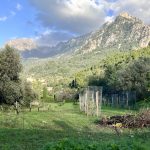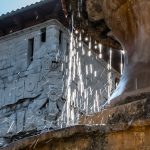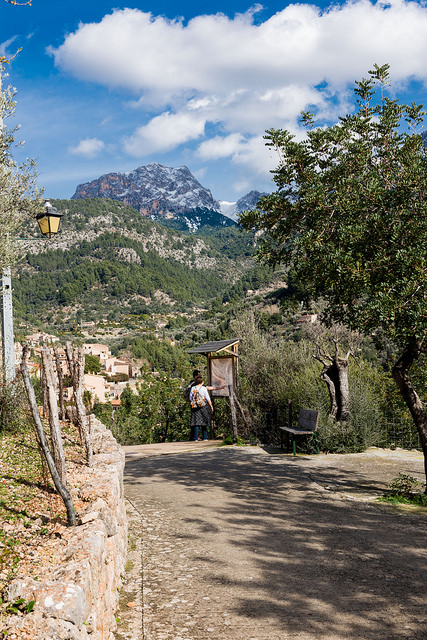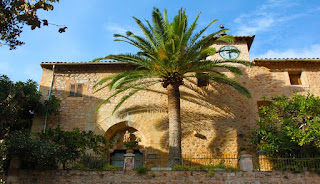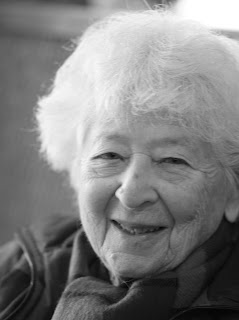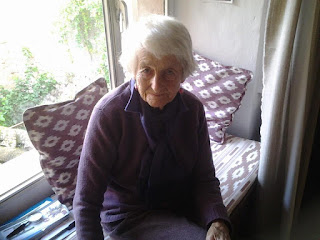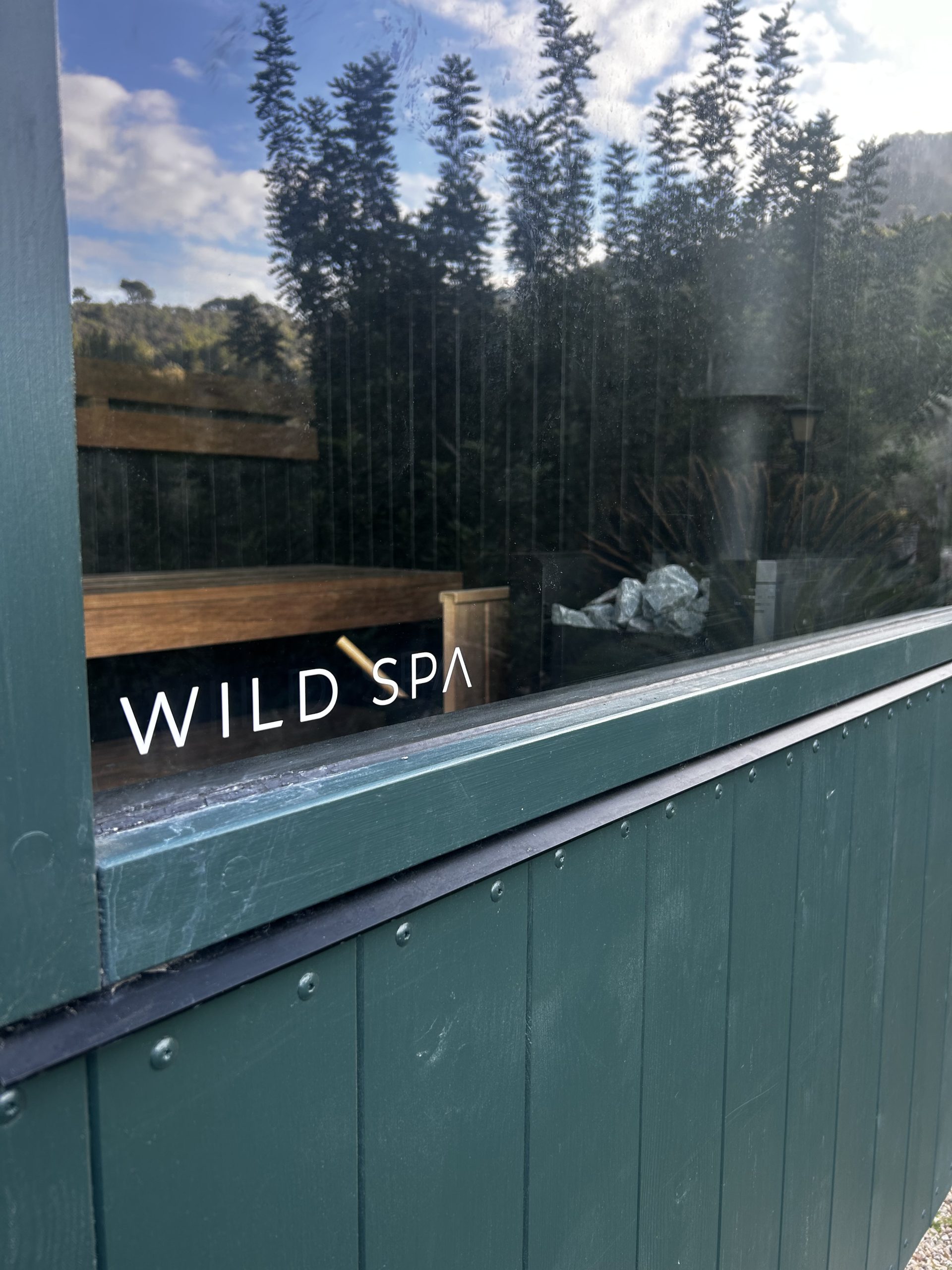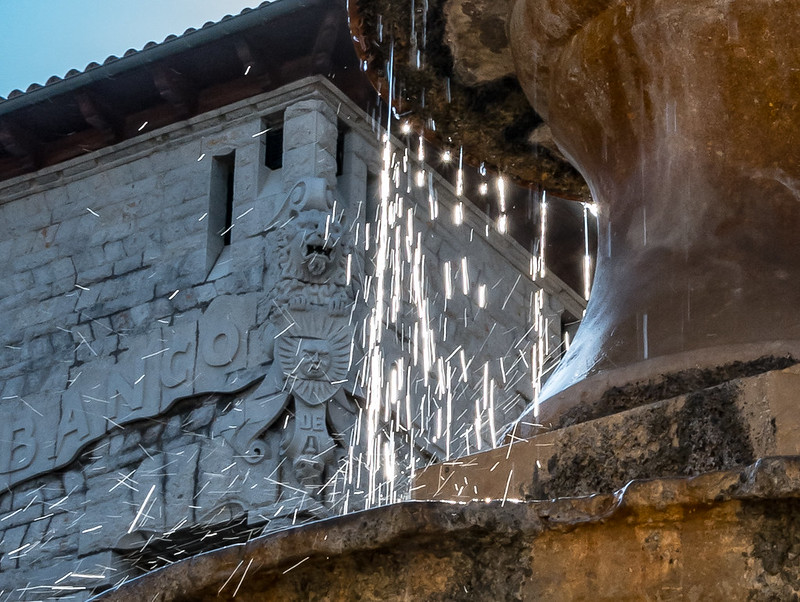FIVE THOUSAND WORDS ON FORNALUTX
Written by Shirley Roberts of SollerWeb
Photographs by Rachel Fox
Published in the Majorca Daily Bulletin as a Fornalutx supplement…
Photographs by Rachel Fox
Published in the Majorca Daily Bulletin as a Fornalutx supplement…
The most beautiful Village in Spain
This is an accolade that has often been granted to Fornalutx and this year a new award has joined the ranks. ‘The Most Beautiful Villages in Spain’ organization has made their decision on the new locations to be included in their 2017 guide. Fornalutx has become the first village in the Balearic Islands to join the group in their list. The criteria for their award is that the village should
Be in a stunningly beautiful location.
It should have a significant cultural and historical heritage.
A commitment to cleanliness and sympathetic traffic systems.
Less than 15,000 inhabitants.
An identifiable working village and not a theme park
Fornalutx can hold its head high and say with certainty that the list applies to them. The location under the Puig Mayor and the Alfabia ridge means that nature in all its majesty is evident every which way you turn.
Its cultural heritage lies in its existence, pre the Conquest of Majorca in 1229, of a thriving manufacturing community. Its rich iron deposits made it important in supplying the armies and the people of the time. Arms and household implements were made here and the furnace can be seen on the coat of arms of Fornalutx. Fornalutx is the ninth smallest municipality of Majorca. It has its own Mayor and Counsellors who are elected and proud to serve their community. These people live in Fornalutx and understand every nook and cranny. They knew from the earlier tourism awards that have come to Fornalutx that the biggest problem for the area is the parking and transport. They have built car parks which are in sympathy with the mountain and tripled the amount of available parking spaces. A bus service has recently been introduced to offer a choice taking people from the village down to the sea in the Port of Soller.
The last census revealed that Fornalutx has around 800 residents. This number swells considerably in the height of the season when all the hotels are full.The world of work in Fornalutx in 2017 is centered around the tourist trade, citrus farming, house renovation and many internet based careers. The Fiestas of Fornalutx, including the controversial bull run, are historic events. The notion of creating tourism fiestas just does not happen here. Visitors are always welcome to join the local people in celebrating but these events would happen if there were no visitors. This is an important distinction when it comes to the beautiful villages proving that they are not merely pretty theme parks.
Fornalutx and Strembo are twinned towns. On 27th April 2013 a ceremony took place in Fornalutx to mark the official twinning of the towns. Strembo is a beautiful, mountainous small town in the Trentino municipality of Northern Italy. This relationship encourages co operation, training opportunities and sharing of experiences for both communities.This village is proud of the honour that has been bestowed on it. The people are delighted that their hard work and commitment to welcoming the thousands who come their way each year has been recognised. The visitors, walkers, cyclists, school trips and third age groups who pour into the place always leave delighted and vow to return.It is an honour to have become the only village in the Balearics to join this special list. The people of the place will work hard to make sure that everyone who visits has a memorable experience and return again and again.
Fornalutx
Fornalutx nestles in the heart of the Tramuntana Mountains with the Puig Mayor towering majestically above it offering protection. The concept of this village in the mountains is a testament to our ancestors and in particular to the Moorish invaders of the past. The island of Majorca has been occupied by many incomers and some stayed a very long time and thought they were going to be here for ever. The Arab influences of the past are the key to the existence of Fornalutx since before the conquest of Majorca in 1229. The Soller Valley is known in 2017 for so many leisure and gastronomic delights from cycling, walking, car rallies and much more combined with exquisite food. In the days I am taking you back to the Valley was known for its industrial use. Iron Ore and smelting pits were found in the Fornalutx area and this is what gave the village its name. Translated the name means “Oven of the Sun”. The oven was not a baking oven but a furnace to smelt the iron ore at extreme temperatures and make spears and knives for battle and domestic kitchen tools and plates.
The people of the time dined on iron and ate with their own brands of locally produced knives and forks. The coat of arms of Fornalutx incudes this image in its design and in that way records its industrial past for posterity. It was the iron which brought the people and the hamlet of Fornalutx grew from there. Some of the people who helped the industrial growth were from the Soller Valley but many others were incomers from Africa. In fact, the definition of a Moor according to Wikipedia is as follows -‘The term Moors refers to the Muslim inhabitants of the Maghreb, North Africa, the Iberian Peninsula, Sicily, and Malta during the Middle Ages, who initially were Berberand Arab peoples from North Africa.
Moors are not a distinct or self-defined people, and mainstream scholars observed in 1911 that “The term ‘Moors’ has no real ethnological value.” Medievaland early modern Europeans variously applied the name to Arabs, Berber North Africans and Muslim Europeans.’
Fornalutx was an early ethnic melting pot and welcomed those that had the skills to do the work in the iron pits that were needed. To have industry in the heart of such majestic beauty was not an issue for the people of the past as survival was the only issue for the population and creating a living out of the land. The world of tourism was going to take centuries to develop. In the meantime, Fornalutx grew into its own independent community. By 1639 the people had built a church dedicated to the Mare de Deu (Mother of God) which remains to this day. The centre of the Square is overlooked by the church and its clock ticks away the time. The life’s work of many generations had resulted in the taming and terracing of parts of the mountain. The olive groves and orange orchards took their place in the mountains around Fornalutx and citrus farming of the Soller Orange began. The work to build the water causeways which are the key to sustainability in this area started right here in Fornalutx with the mathematical brains of the Moors making sure that every drop of rain that fell was able to be harvested. The water channels and underground reservoirs are quite simply miraculous and one of the reasons that the UNESCO award was given to the Tramuntana mountain range.
The Church and its work expanded in Fornalutx by the arrival of the Convent and the Nuns. The school of the village in the early days was run by them. The school room, as was, is now part of the Petit Hotel which took over the building. This was all very significant for this hard working community. They now had a Church, a School and a Town Hall and they were increasingly proud of their progress as an independent community.
In 1837 the break with Soller happened and Fornalutx became a municipality in its own right. Since those days the elected Mayor and elected Town Counsellors decide the local issues for the Fornalutx area.There is friendly rivalry between the City of Soller and it little sister up the mountain but at heart they all want what is best for the whole of the Soller Valley. Fornalutx, like many places in the Soller Valley lost many of its children to economic migration when times were tough in the late 1800’s. The orange harvest failed and many young people were encouraged to leave by boat from the Port of Soller for France and the Spanish Colonies. The migration was such that today it is estimated that 70% of Sollerics have French ancestors. Catalan is the language spoken here as the first language but French is the second. Many of the people who left at that time returned when their fortunes changed. Some returned to live and many more bought holiday homes here for long Summers back in Fornalutx. They brought back the influences of France, Puerto Rico, South Africa and many other places. Interesting furniture and style graced the Fornalutx houses and the obligatory piano. It didn’t matter if no-one could play as it was the ultimate success story. The highly polished piano had pride of place in the Entrada of the renovated village houses.
The history of Fornalutx continues to be written as the industrial days are gone. Citrus farming is enjoying a revitalization but the focus in 2017 is on year round tourism. The people of Fornalutx are determined that the location prize that the universe has given them will continue to make new history every year. It is their burning ambition to introduce it to the next generation and beyond. They are just so proud of Fornalutx and everything it stands for.
The faces of Fornalutx
Fornalutx has a local population of proud local people who share their glorious space in the universe with generations of incomers. The G I Bill brought writers and artists from the USA in the 1940’s and 50’s. These were people who, when their war service was over, could study and be funded in Europe by their government. The artist’s colony was settled in Fornalutx, Deia and on the other side of the Tramuntana in Pollensa. The same was the case for writers, incoming culture joined local to create a productive, creative heart. Musicians joined the Fornalutx crowd and soon the BBC got in on the act. Producers, directors and film makers turned up in Fornalutx and began buying up some of the derelict village houses vacated by economic migration. The 1960’s saw a gentle paradise of creativity which continues to this day. There are many names that can be mentioned in connection with Fornalutx and you can still walk the streets today and see faces that you have just seen on television and in Hollywood productions. For this article I will mention two of the special people that have lived here and contributed so much.The first is the legend that was Elena Davis. Elena made her home in Fornalutx and in time was given the high award by the Mayor of Fornalutx for being ‘An Illustrious Child of the City’.
This is Elena’s story
On Thursday 6thOctober 2016 over fifty people gathered in Soller. We were following the express wishes of Elena Davis who died a few weeks ago at the age of 101. Her instructions, in the event of her death were clear for all her friends and it centered around Bar Turismo in the heart of Soller.The significance of Bar Turismo comes because Elena ran the English Library of Soller in this very place from 1963 to 1998. Bar Turismo was the daily meeting place of all the English speaking colony of the Soller Valley plus many holiday visitors. In the 1963 of Soller there was censorship of the printed word and speech and very few publications in English. This was the time she decided to start an English rental library. In this pre Kindle, English television and radio days it was a lifeline. Elena ran this place like a well oiled machine and the handwritten library lists and account books are still in existence today. They are part of the memorabilia of the era which finding a place in the Museum of Soller.
Elena was a sensible, hard working New Yorker living on E 54th Street with a career in PR and Advertising for a charity supporting research into infantile paralysis. She was serious and driven and work was the number one priority in her life. Her friendship with the violinist Escha Bledsoe introduced her to the concept of the Island of Majorca which she thought was somewhere near the equator. . Elena took a decision to give up being sensible for awhile and took a sabbatical from her career. She made the journey to Majorca for a four month stay from which she never returned.It was in 1959 when she first arrived in the Soller Valley and began her forty-five-year discovery and love affair with Fornalutx. For new readers of her life story I will give a shortened version which can be augmented by buying her book on Amazon – it is called ‘Witches, Oranges and Slingers’ – Half a Century on Mallorca.The Soller Valley that Elena arrived to was one of a hard working rural community with a creative heart. The influences of the artistic and hippy communes of Deya and parts of Soller had left their mark and art, music and writing in all its forms were to be found here. There was little money and the artists lived very frugally until their lucky breaks happened. No cash but plenty of interesting conversation, parties and shared food gatherings which made the valley a very exciting place to live.
Elena made her living by teaching English to local people and running the English Library in Bar Turismo in Soller. She had thousands of books and the library was legendary for the reading material and the conversation. Thirty years of library blended into the sort of relationships where people trusted Elena and she looked after their houses and affairs here. The fact that at one time she held 20 power of attorney statuses for local ex pats bears testament to this. Her work for Age Concern and her involvement in their very earliest days on this Island will never be forgotten by that organisation.
Elena Davis led a remarkable life as an incomer to the Soller Valley. She was busy, sociable and caring in her charitable works. The US Consular Agent Kimberly Marshall was at the funeral and told me that at the American Embassy they are so proud of Elena Davis. She represented the US beautifully in her life in the Soller Valley. She was a fine example to women who want to travel, see the world and make their own choices. President Obama sent Elena a message on the celebration of her 100th birthday which was delivered to her by the US Consul to her party in Fornalutx. He said that he was grateful to her for being a fine ambassador for the USA in Majorca.
Another remarkable lady of Fornalutx, whose story was touched on in a recent film, was the intrepid Veronica More. Can you keep a secret?
This is Veronica’s story
Veronica More took her stories to the grave a few months ago. She is buried in the cemetery in Fornalutx and this is her remarkable life. This is the story of a five-year adventure or maybe it is more than that. The Official Secrets Act rears it head as does all the intrigue of war that took place over 60 years ago.
Our heroine Veronica More lived in Fornalutx and she granted me a look at a period in her life when everything was not quite what it seemed. Veronica was 95 when we talked and had owned a house in Fornalutx since 1956. The price of the house was equivalent to 250 pounds and was paid out of the war gratuities that she and her husband Tom received at the end of their active service. Veronica lived in that house until her death in 2016 and it was there surrounded by paintings and family pictures that she told me her war story.
Veronica lived in Edinburgh with her family and enjoyed an upper middle class life. She attended St Monica’s private school in Edinburgh before being sent off to The Mount School in York to board. Veronica was the youngest child of the family and was used to getting her own way. The custom at the time at the end of formal education was to send the girls off to be ‘finished’ somewhere in Europe with a little cachet. Paris was a favoured city as were many places in Italy but our girl was having none of that – she wanted to go to Germany. The news in 1937 was worrying but after making enquiries of family connections working in Berlin it was deemed safe to send this 17-year-old on the Orient Express to land herself in Stuttgart to meet her host family. Her months of living with that family taught her German and allowed her an observation into the world that was gearing itself up for war.War was declared in 1939 and our intrepid young lady beat a path to the recruiting office’s door to sign up.
She joined the Women’s Auxiliary Air Force and started training to drive ambulances and other military vehicles. Seconded to the Balloon Barrage Squadron in the Firth of Forth she drove lorries and vans and became a very useful mechanic. She was billeted with the families of miners in Dalmeny and spent a winter carrying cans of petrol out of the frozen mud to fill up her engines. Petrol was in short supply and had to be hidden so that’s why cans were used to fill the military vehicles.Life plodded on and Veronica’s war was progressing along in a very useful way when the call came that she was to attend a ‘secret interview’ in London. The night train to London was taken and then transport arranged for her to go to a country house in Buckinghamshire. Bear in mind that the backdrop to this was her age – a mere 19 years old and called to a secret meeting by the Air Ministry top brass.
The interview was all about her time in Germany and the fact that she could speak and write in that language. As the interview concluded she was sent back to Scotland not really knowing what she was being interviewed for. She had answered questions and not been allowed to ask any and returned from whence she came none the wiser.Two weeks passed and then the message came that she had been promoted to Sergeant and was to transfer to the Air Ministry in London. Then it was off to another country house for more training and officer preparation and then the Ministry’s plans for her became clear. She was being attached to the ‘Air Intelligence’ division and working out of a central London location in Victoria. From then on her’s was a very different war she was a ‘listener’ and spent her shifts listening in to the communication between aircraft and their controls. She learnt to interpret Morse code and understand the significance of changes in patterns. She was in London for the worst of the bombing raids and experienced the war from the London sharp end. Her contribution to the war effort and that of her colleagues was surrounded by secrecy and the signing of the Official Secrets Act was a very important action that sealed their lips for years.
The ability to spot changes in the messages and understand the spoken inflections was a fine skill and considering that this was all done in German is deserving of nothing but maximum respect.The listening posts were being set up in significant places all over theatres of the war depending on the progress of the war. After the battle of El Aleman when Montgomery pushed through North Africa the listening posts of Egypt became important and so in 1942 Veronica found herself in Heliopolis near Cairo. Her office was in the Museum of Flora and Fauna and the sun shone every day. The work was the same though – hours of listening in and recording on index cards conversations and changes. Code breaking was added to her skills here and there is no doubt that young Veronica was a significant member of the team.I have to digress a little here because the love story comes in at this point when Veronica fell in love with her own English soldier Tom Weedon. Their two years in Egypt were full of hard, sensitive work and a joyous love affair – tinged only by the fact that he was already married and had left a young bride back in the UK. The complications of wartime and relationships are the subject of another article but significant here in that this was the place this young couple met and only history would know at that stage whether they had a long term future with each other.The travels around Egypt and the adventures of youth were part of off duty life and it was living there that made Veronica realise that when this was all over she could never settle for living in a place without sunshine.
The seeds were planted for a long term move to the Mediterranean at that time which was later fulfilled in the family relocation to Fornalutx.The war had its own momentum and a posting to Southern Italy was next to Fasano near Brindisi. The code breaking work was in full throttle on this assignment and the six months of the secondment were very important in the outcome of the war at that stage. Then the call came that Bletchley wanted Veronica More and she was to return post haste to the UK and report for duty at Bletchley Park.This was no joyous homecoming for Veronica as she didn’t know how life was going to end with Tom now that he was back home with his wife. She hated the drabness of England after the years of sunshine and although a posting to Bletchley was seen as a great honour she found it difficult to get too excited. War fatigue was setting in and she had had enough of the military life by then. Nevertheless, these private thoughts were not allowed to get in the way of the war effort so she duly presented herself at Bletchley Park.
Bletchley Park near Milton Keynes was a country house built round a lake. There were many huts in the grounds and the staff was divided up between military and civilian personal. Their role was to break the codes that existed and enable the decision makers to have access to the intelligence they gathered on a 24-hour basis. This was shift work in conditions of the utmost secrecy. The reason for the huts was to keep groups of people separate so that they couldn’t share information if they were tempted to do so. Bletchley was very important before Veronica got there and was credited with all the success that you can learn about in the film just released ‘The Imitation Game’ starring Benedict Cumberbatch and Keira Knightley. This award winning film tells the story of the code breakers of Bletchley and the world they inhabited.The staff of Bletchley Park were bussed into the place from the billets in nearby villages. Sleeping on a camp bed in the house of a local lady who didn’t really have room for her was Veronica’s lot in life at that time. She remembers that the place had a plum tree in the garden and every day for dessert she was served plums and custard. This was the dish that summed up the war for her.Bletchley was an important place to work and to be sent there was a great honour. This was a fitting end to Veronica’s war time endeavours to have served out her last posting at such a place. Her German language and written skills had served her country well through the war years. Her desire as a truculent teenager to do something different and head for Germany in her ‘gap year’ was a decision that would have a huge significance on her war effort and her early life.
Veronica’s war was over in 1945 as the war ended. She returned to Scotland and waited for the rest of her life to begin. – she was twenty-five years old.Veronica married her Tom who became a famous photographer and a teacher of photography. They had four children and relocated to Majorca in 1959. Six months later Tom died and Veronica was a widow with four children to bring up. Her life and what she did next is just so fascinating and are told in the many books she wrote.
Veronica More was a code breaker; she has let me into her secrets – up to a point but I couldn’t possible comment as to whether there was much more to her than meets the eye. All I know is that I had the best time talking to her and enjoying the story of a small part of her life when she helped Britain win the second world war.There are many stories I could tell of the notable residents of Fornalutx. Elena and Veronica lived lifetimes here, gave so much and embraced the life they found in their Fornalutx relocation. The 2017 version of this story is waiting to be told and there are many equally fascinating people who live there today. There is something in the soul of this place that attracts very special people and our lives are enriched by them.
Fornalutx today
The village in 2017 is a beautifully preserved mountain community. Attention has been given to the stonework and the houses conform to its stone walls, red roof tiles and green wooden shutters of the past. Fornalutx is built on different levels with many of the higher streets pedestrianized and cobbled. Car access is on one main road through the village. The smaller road and tracks to get to some of the mountain houses are challenging for those not used to the terrain. Fornalutx is surrounded by mountains and tamed ridges which are farms and orchards. This is the very heart of the citrus world of the Soller Valley. The annual award for the Citrus Farmer of the Year is made in Fornalutx at the Orange Festival. The planting of hundreds of new orange trees this year and the employment of specialists to oversee this work is taking the area back to its halcyon growing days. Fornalutx is a diversion on the main mountain road from Soller to Lluch and then on to Pollensa. A right turn at the signpost is many people’s introduction to this place. A stop for coffee and a wander en route to other places starts many love affairs with the mountains. Cyclists and walkers arrive in their hundreds every day in the season. The small square is buzzing with chatter from morning till night. Beautiful weddings happen in the Fornalutx Church and the people in the square enjoy watching the weddings of the rich and famous and the lovely local people who get married there.
The restaurants of Fornalutx offer a mixture of traditional Mallorquin cooking to fine dining with pizza and Ice cream thrown into the mix. The local shops and bakery create local dishes and summer visitors enjoy learning about Empenadas, Coco de Patatas and locally made Ensaimadas. The village is as self sufficient as it is able to be with the number of residents it has. A health centre, banks a hairdressing Atelier, Estate Agents and tourist shops take their place along the main street.Fornalutx has its own Museum which is dedicated to tiles. Tiled floors and walls are a huge feature of the village houses of the Soller Valley with floor tiles being of particular interest. The Can Xoroi Museum has over 186 different tiles on display. The museum is just off the main square in one of the side lanes. The cobbled steps and pedestriansed paths take you to all sorts of delights. Boutique hotels sit alongside village houses and every one has its own story to tell.
There are many mountain walks that start from Fornalutx and most of them are on route 221 which cuts across the Tramuntana range. There are walks for all abilities and the one that is the starting point for so many is via the entrance to Fornalutx Cemetery. This oasis is worth a visit before joining the path that wanders down into Soller or the Port of Soller depending on which turning you take. Route 221 in the Soller Valley takes in the delights of the Barranc and the lakes and reservoirs of Cuber and Gorg Blau. The full Dry Stone mountain route is 156 km long and extends between Andratx to Pollensa currently. The master plan is that this route will be doubled in length and take in the other side of the island.
Fornalutx is a village which is comfortable in its own skin. The community know one another well and when the visitors have left for the day those left in the square are those that live there. Live music and events happen in its heart plus community barbeques and fiestas. This group of friendly people grows in the season when those who own second homes come for as long as their schedules allow. An eclectic mix of people from all parts of the world make Fornalutx what it is today. From its Moorish beginnings to 2017 the mix of people contribute to this place and make it one of the finest villages in Spain.


